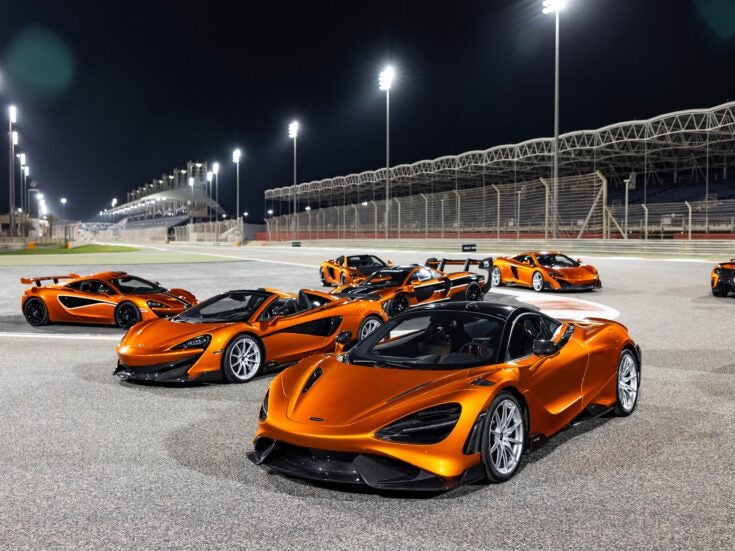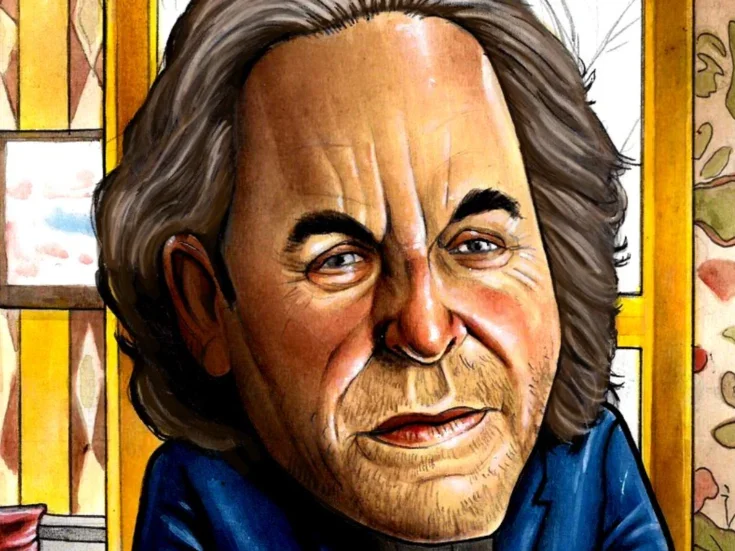
Sicily Season
Culture, history, beauty — glorious Sicily has it all… as well as a damaging and misleading image as the home of the mafia. Clive Aslet charts the island’s volcanic ups and downs
EUROPE IS A gallimaufry, a potpourri, a bran tub, a mishmash. Where should you go to understand, in a pleasurable if not hedonistic way, the overlap of different influences? Paris, the city of art? London, the hub of a great trading empire? My suggestion would be Sicily, the deflated football off Italy’s toe.

OK, I hear what you’re saying. ‘Make him an offer he can’t refuse.’ Cue strains of Speak Softly Love, the official name for the theme from the 1972 movie The Godfather. Poor old Sicily’s name around the world is now synonymous with the gruesome rituals of a world-famous brand of gangsterism, apparently as indigenous as the griffon vulture or Sicilian wall lizard.
But strip that from your mind and think back to how the Ancient Greeks saw it: a land of plenty and eternal joy, whose volcano, Etna, provided a convenient forge in which to make the armour of the gods. It was where the sun god Helios grazed his golden sacred oxen. Helios has been joined by Stelios, providing easyJet flights to Palermo and Catania airports.

Actually, the Greeks aren’t the beginning. You can find species of wheat that have been growing here for 7,000 years. (They liked it. Why change?) Whenever Homer wrote the Odyssey — perhaps the ninth century BC, perhaps the seventh — he marvelled at the gardens of Sicily, abundant with grapes, figs, olives, pomegranates, pears and apples.
Stately pampering at the Grand Hotel Timeo
The Greek city of Syracuse became the gastronomic capital of the Mediterranean. Later, the Arabs introduced orange trees, lemons, sugar, pasta and ices. By a glorious paradox, ice abounds on the Island of the Sun: the Greeks and Romans gathered it from Mount Etna to cool their wine. It was left to the Arabs — Saracens as they were known in earlier times — to create the sorbet, by putting ice in their syrups. Artichokes and asparagus grow wild.
As an island suspended between Europe and Africa, Sicily was open to all comers in the ancient world. The Greeks built cities and left ruins. We visited Agrigento at dusk and had the two great temples and the processional way between them almost to ourselves. Agrigento boomed after the defeat of the Carthaginians at the battle of Himera in 480 BC.
The Carthaginians eventually got their own back and sacked the place; so did the Romans, and it dwindled to insignificance. Syracuse, the birthplace of Archimedes which Cicero described as the greatest and most beautiful of all the Greek cities, has been overtaken by Palermo. Poor Segesta is remembered by its hilltop temple, as white as a bone against the dark of the mountains and better preserved than anything in Greece. But where’s the city that this great monument belonged to? Gone, practically without trace.
It used to be assumed that the villa at Piazza Armerina, in the cool of the mountains, must have been executed for an emperor of the fourth century AD. Now, however, the consensus is that the owning family was just stupendously rich.
They came from Rome and liked to be reminded of what they’d left at home when visiting their country seat, so they had the finest mosaics of their time laid into the floors. By lifting their feet they could relive the chariot races they had sponsored in the Circus Maximus and the Great Hunt that was also part of the games.
The ancient equivalent of beach volleyball is played by a number of athletic maidens, popularly known as the Bikini Girls. Elsewhere, the superhero Hercules slays his opponents gruesomely. The Romans weren’t known to champion the underdog. Nor were the Arabs who came after them.
Nor indeed were the Normans. Yet in Sicily their attitude to empire was quite different from that elsewhere. After 1066, William the Conqueror imposed a new hierarchy — and new culture — on England. But the Hautevilles, who conquered southern Italy and Sicily to put Roger I on the Sicilian throne, were happy to live and let live.
Sicily was rich; it worked; they let the Arabs get on with their maths and the Jews with their trading. Many Normans, fighting men, saw advantages in the softer lifestyle of the vanquished. They rather liked the clothes and the harems.

Externally, the cathedrals that they raised are not so different from those at home: you have to hand it to the Normans, they were good with stone. But the internal walls are covered in mosaics, of an artistry that leaves me reeling. You might expect the very highpoint of Byzantine style to survive in Istanbul, but no, it’s here. Many of the mosaics in Byzantium central were obliterated after the city fell to the Turks.
The Hotel Timeo
CEFALU IS A little town in a rocky position by the sea — an unlikely place for a cathedral, but one was built as a thank-you offering after Roger II survived a shipwreck off this coast in 1131. The mosaic figures are imposing but stiff. By the time William II began the cathedral of Monreale in 1174, the craftsmen — lent by the Byzantine emperor in an act of cultural diplomacy — had developed a technique of breathtaking fluency.
In the story of Noah, you see figures drowning beneath the waves of the flood. The storytelling is brilliantly incisive. God ignites life in Adam by fixing him with an eyebeam: you can almost feel the exchange of energy. Perhaps it was downhill for Sicily after the Norman moment, but the age is still something to contemplate as an example of how Europe might have got on in the Middle Ages, if only it had understood the benefits of tolerance.

In some ways, Sicily has a habit of wiping the slate clean, forcing its long-suffering population to start again. Earthquakes have pulled down some of the proudest works of man. In 1693, a powerful quake struck the east of the island, devastating the towns of Noto, Modica and Ragusa. They were rebuilt as models of late Baroque, although, alas, Noto was struck again by an earthquake in 2007.
The Rocco Forte Verdura Golf and Spa Resort
HOWEVER CHARMING, THIS flowering of the Baroque was a sign of Sicily’s isolation. It dropped out of the mainstream and was on the way to cultivating the indifference to the tide of events evoked by Giuseppe di Lampedusa in The Leopard.
The ninteenth century was when Cosa Nostra got its first toehold, but already the island was winning admirers from a quite different world. Richard Wagner, who knew a thing or two about self-indulgence, wrote some of Parsifal in Palermo. He also visited Taormina, just beginning to wake up to its destiny as a place of calme, luxe et volupté.
The first of Taormina’s many hotels, the Grand Hotel Timeo, now owned by Orient-Express, opened in 1873. The Timeo still specialises in stately pampering. Say what you like about the Victorians, they did know how to pick a good view, and to look out over the bay, towards the slopes of Etna, is as relaxing as a massage. Only, of course, you can have a massage too, if you’d like one.
When I first came to Sicily in 1973, it was an adventure. Everything is an adventure when you’re eighteen, and that’s how you like it. With the passage of time, I’m glad to Sicily has changed in line with my own expectations of life.
Sack-loads of European money have been upended over it, and whatever the wonga has or hasn’t done for the economy and the corruption, the drains have improved. In the squares at night, you don’t only see men playing dominos, eyeing young blond-skinned men with, in those days, long hair in a concerning way. Sicily has become part of Europe.
A celebration of this is Rocco Forte Verdura Golf and Spa Resort, on what had previously been the unfashionable south coast near Sciacca. It used to be a citrus farm which had its own railway station. Now it is a paradise of such deep tranquillity that I spent much of the first 24 hours asleep. Sicily is like that: a deeply sleepy place, full of big flavours and gutsy wine.
SICILY ITINERARY: VERDURA GOLF & SPA RESORT and GRAND HOTEL TIMEO
Save up to £430 per couple. Carrier (0161 492 1357, www.carrier.co.uk) offers 7 nights from £1295pp, including 4 nights at Verdura Golf & Spa Resort and 3 nights at Grand Hotel Timeo, including breakfast, return flights from London Gatwick and 7 days car hire.
Price based on departure 7 Oct 2014. Verdura offer a 25% early booking reduction valid for travel 1 Sep – 1 Nov 2014, book by 31 Jul 2014. Grand Hotel Timeo offers a 10% early booking reduction valid for travel 6 Oct – 15 Nov 2014, book a minimum 60 days prior to departure.
Read more from Clive Aslet







